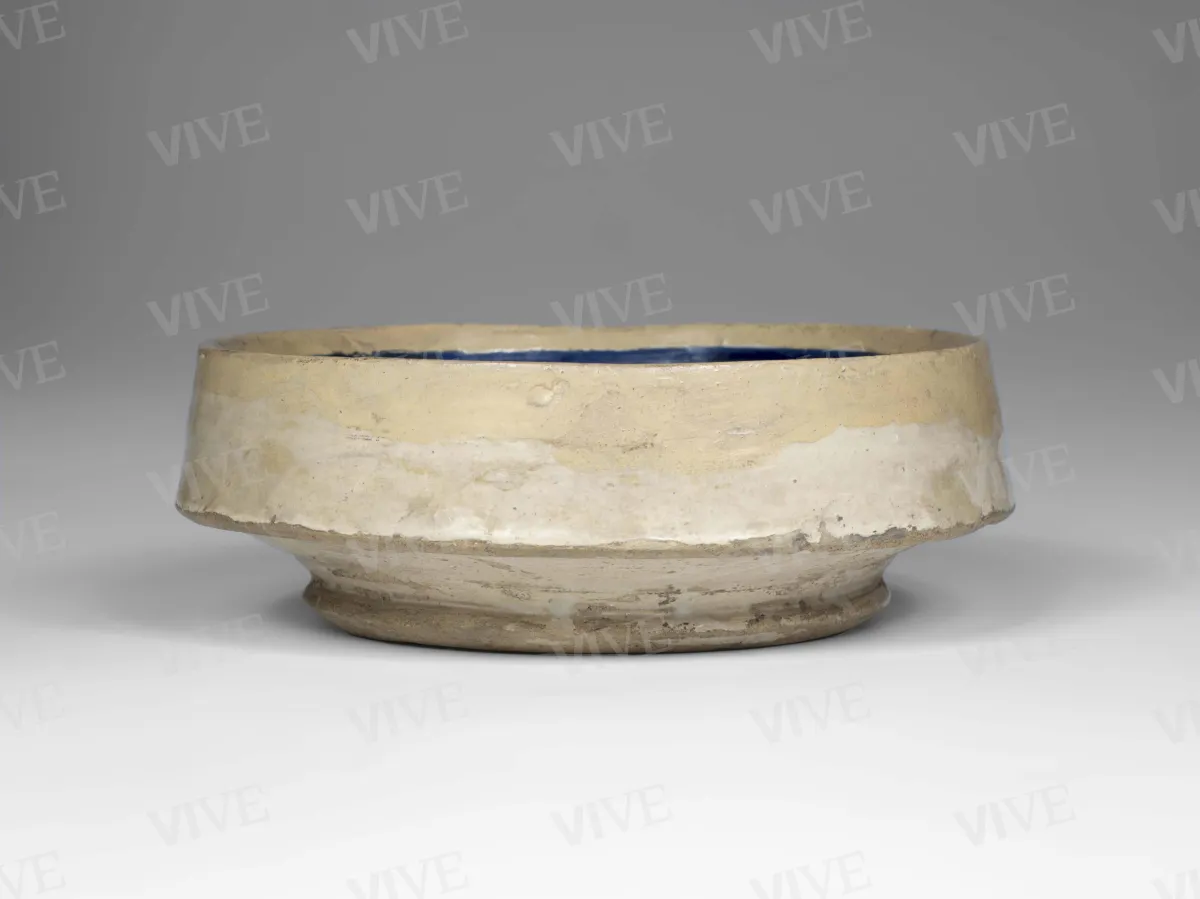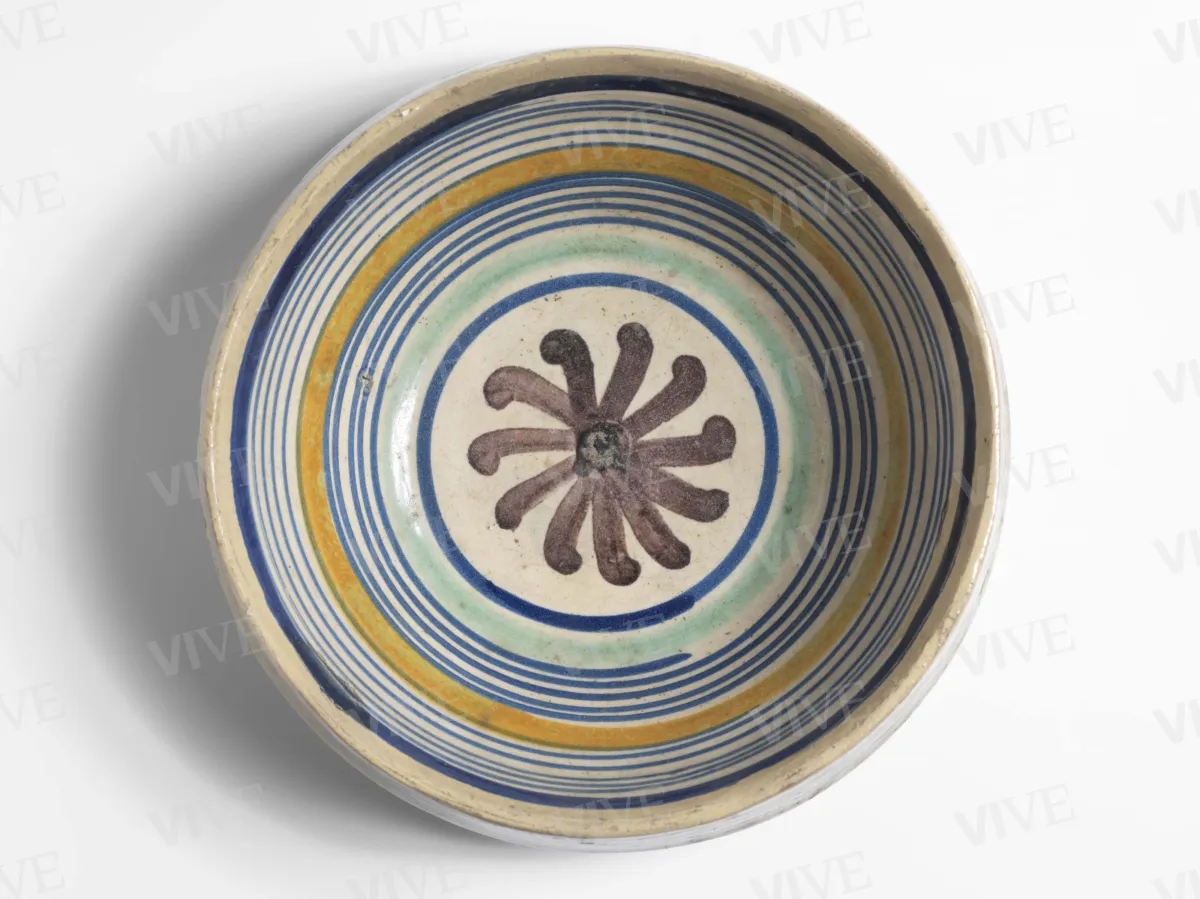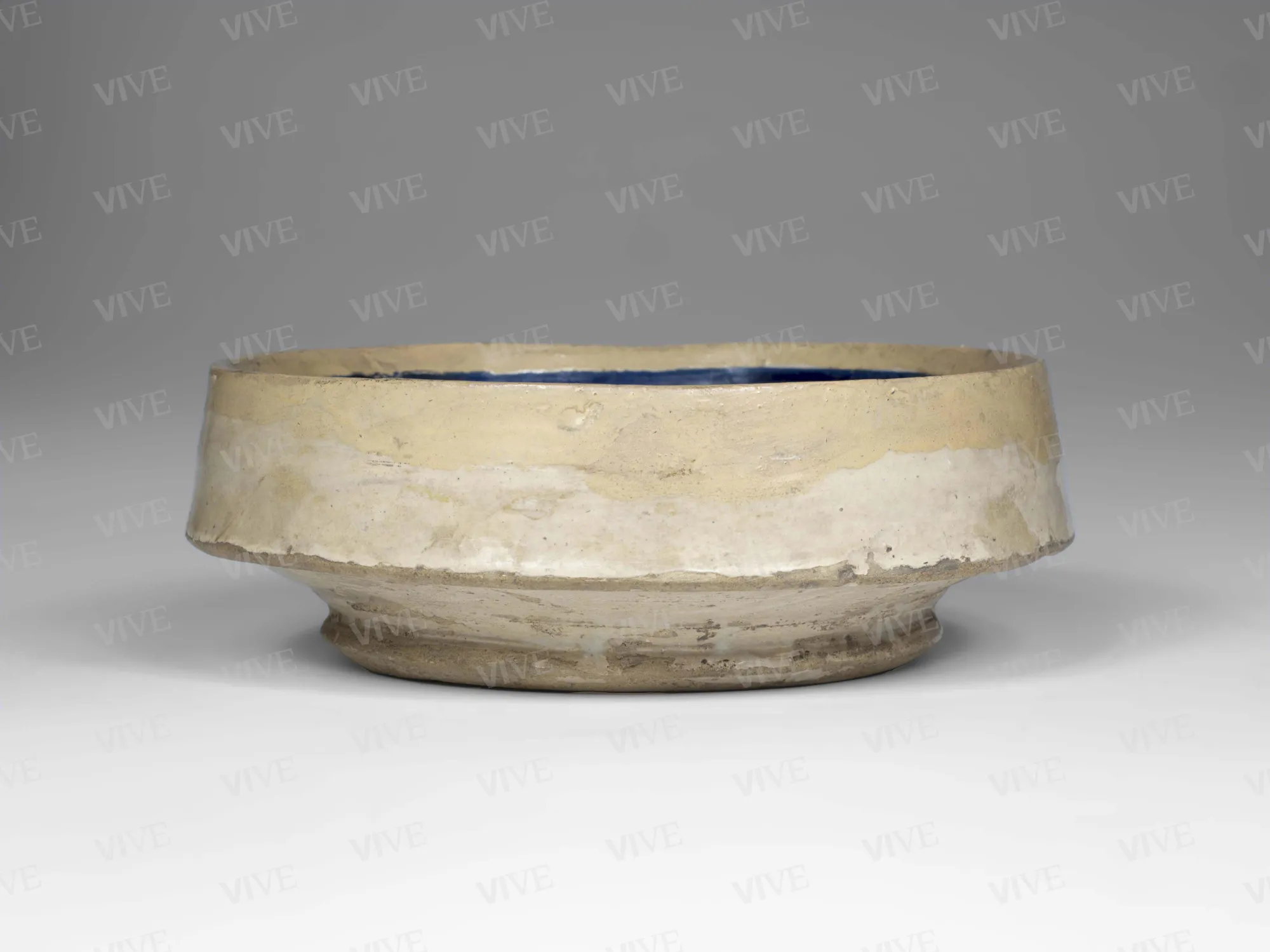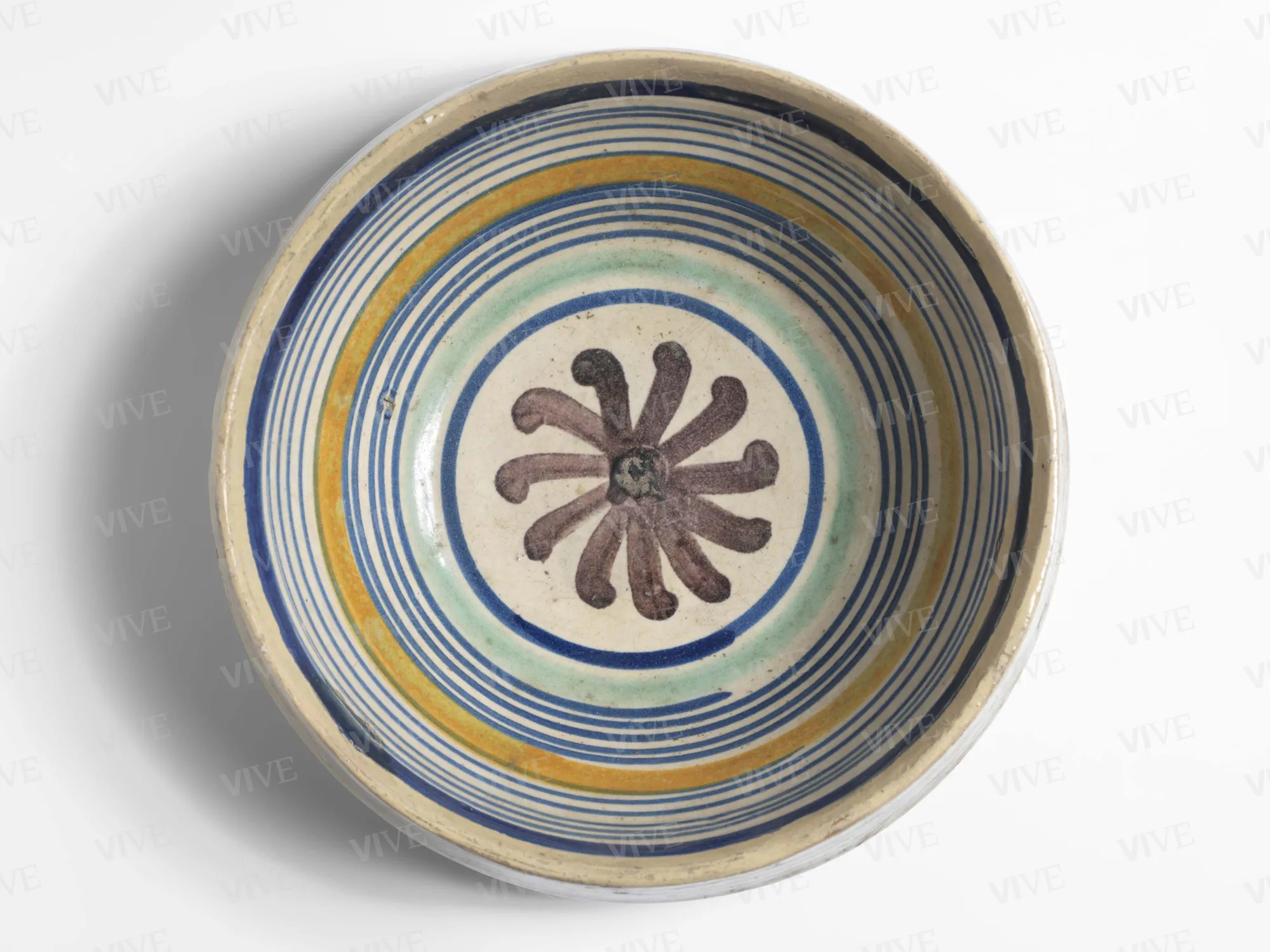Carinated bowl
Roman milieu Last quarter of 15th century
Carinated bowl in polychrome majolica, decorated with blue, green, and orange concentric lines and a brown spiral motif. Rome, late-fifteenth century.
Carinated bowl in polychrome majolica, decorated with blue, green, and orange concentric lines and a brown spiral motif. Rome, late-fifteenth century.
Details of work
Catalog entry
This bowl, displayed for the first time, features a banded rim, an external carination, a truncated cone body, and a disc-shaped foot. The interior is decorated with blue, green, and orange concentric lines, and a brown spiral in the small hollow.
This form originates from the collection of archaic Roman majolica (Mazzucato 1982, p. 26, fig. 12; Fogagnolo 2006, p. 152, fig. 10) and signifies the transition from medieval traditions to a modern era characterized by the emergence of new styles and a novel application of colors. It maintains the robust contour of the outer wall and the small dimensions typical of Archaic Majolica, with a diameter consistently between 14 and 18 cm. A comparable carinated profile is seen in the rounded graphite ceramics of the fifteenth century (Ricci, Venditelli 2010, p. 270, forms 2 and 3). By the early decades of the subsequent century, this shape had completely vanished from the ceramic repertoire of Rome and Lazio.
The application of concentric lines in blue, green, and orange on the inner surface of bowls is indicative of Roman and northern Lazio workshops from the late fifteenth century (Frommel, Pentiricci 2009, pp. 268-274, nn. 30-35; Ricci, Venditelli 2010, pp. 211-217). Occasionally, the cavetto is embellished with blue or brown spirals, monograms such as "IHS," or coats of arms that serve purely decorative purposes rather than signifying a specific patron. Similar motifs are observed in closed forms like small jugs and jars produced during the same period (Ricci, Venditelli 2010, pp. 190-191).
Luca Pesante
State of conservation
Good.
References
Mazzucato Otto, Indagine su una forma: la ciotola romana del primo Quattrocento, Roma 1982;
Fogagnolo Stefania, Lo scavo del tempio del Foro della Pace e un nuovo contesto di ceramiche rinascimentali, in Meneghini Roberto, Santangeli Valenzani Riccardo (a cura di), Roma. Lo scavo dei Fori Imperiali 1995-2000: i contesti ceramici, Roma 2006, pp. 145-167;
Frommel Christoph Luitpold, Pentiricci Massimo (a cura di), L'antica Basilica di San Lorenzo in Damaso. Indagini archeologiche nel Palazzo della Cancelleria (1988-1993). II. I materiali, Roma 2009;
Ricci Marco, Vendittelli Laura (a cura di), Museo Nazionale Romano. Crypta Balbi. Ceramiche medievali e moderne. I. Ceramiche medievali e del primo Rinascimento (1000-1530), Milano 2010.














